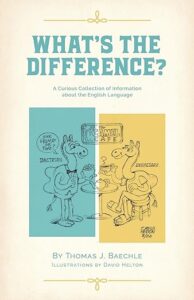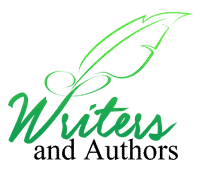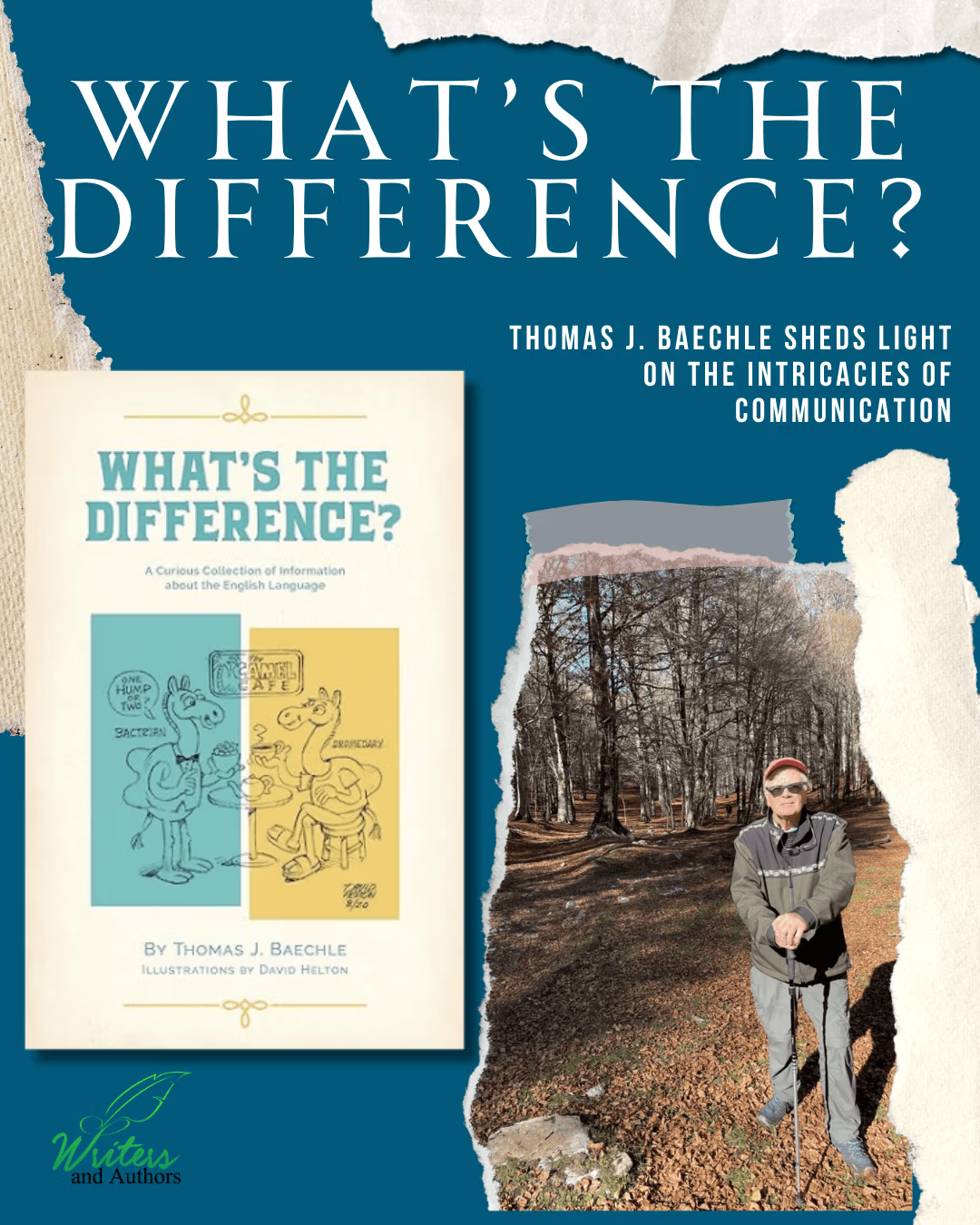Language is a complex subject, with intricacies that often escape notice. In the book What’s the Difference?, Thomas J. Baechle meticulously dissects the subtle variations between seemingly synonymous words. His inspiration stems from personal anecdotes with his children, sparking a curiosity to understand the precise meanings behind everyday language. From the intersection of temperature scales to the nuances between cultural terms, Baechle’s work shows just how intricate the human language and communication tends to be. His insights not only provide clarity but also serve as a fun way to engage conversations, paving the way for a deeper understanding of the linguistics that color our everyday interactions.
What inspired you to explore the subject of communication differences in your book, What’s the Difference?
Initially, conversations with my children about the difference between this or that inspired me to research and explore the meanings of words. People often use a word that has a meaning similar to but a bit different than the meaning that they intended. Capital/capitol, swamp/marsh, hay/straw, are words that seem to mean the same thing but actually have different meanings. As I considered these types of words, more words kept creeping into my mind and became the idea for the book.
What categories or aspects of communication differences does your book primarily focus on?
I think the aspect of precision in word choice is what has fascinated me. I have sometimes read a book or article and because of the context, suspected that the author actually meant something a bit different than the word chosen.
 How do you believe this book can benefit both professionals and individuals in their personal lives?
How do you believe this book can benefit both professionals and individuals in their personal lives?
I have frequently heard someone express a question about the difference between two words. This type of question comes up quite often in daily life. It can lead to a fun conversation and can be a learning experience. I have also heard people, including me, express surprise that a word did not mean what they thought it meant.
Why is it important to understand and navigate these differences in communication, especially in diverse settings?
While it may be the case in a given instance that a person need not understand the difference between a maze and a labyrinth to understand the meaning of the writer, I think that striving to be precise in our communications is a way to avoid confusion. Using the term luminaria instead of farolito can indicate a misunderstanding of a cultural practice. Or using the term siege instead of attack might indicate a different view of a historical event.
Can you provide examples or scenarios from your book that illustrate the practical application of understanding communication differences in everyday situations?
At Thanksgiving the question of whether a dish is dressing or stuffing generated interesting discussions. Knowing the difference between measurement scales, such as Fahrenheit and Celsius temperatures, circumference and perimeter of a circle, semiannual and biannual events, can all lead to practical misunderstandings.
Misunderstandings often arise due to communication differences. How does your book provide guidance or strategies to resolve these instances?
As with many subjects of disagreement, striving to discuss differences in word meanings can and should be a fun encounter. Handling these conversations without disparaging the other person is important for maintaining civil relationships. The book offers low-key answers to many of the questions.
In the age of rapid technological advancements, how does your book address changes in communication and their effects on these differences?
Certainly the internet can be used to look something up on the spur of the moment. My book collects and explains many examples that might not otherwise come to mind. It offers the opportunity to explore many examples and invites conversation about different words. The book can be a conversation starter and a fun way to spend some time with family and friends.
What impact do you hope What’s the Difference will have on readers and the field of communication?
My hope would be that readers of What’s the Difference would explore further the examples described with the bibliography included at the end of the book. Also, my hope would be that readers would look for their own further examples of such words. It could lead to readers looking forward to learning and furthering their own interest in precision in word selection.
Looking forward, do you anticipate any emerging trends or changes in communication differences that might not have been covered in your book?
An emerging trend could be that communication, both written and spoken, utilize fewer less generalities and a bit more precision in word selection.
Find the Author
 What’s the Difference?
What’s the Difference?
In What’s the Difference, the distinctions between similar words are explored. Words such as cemeteries and graveyards, cougars and pumas, oceans and seas are explained, as well as seltzer water and club soda, milk and buttermilk, buffalo and bison.
Words that we frequently use interchangeably often have subtle differences, and sometimes have significantly different meanings. This book provides a fun look into the array of words in the English language that have similar meanings.





















